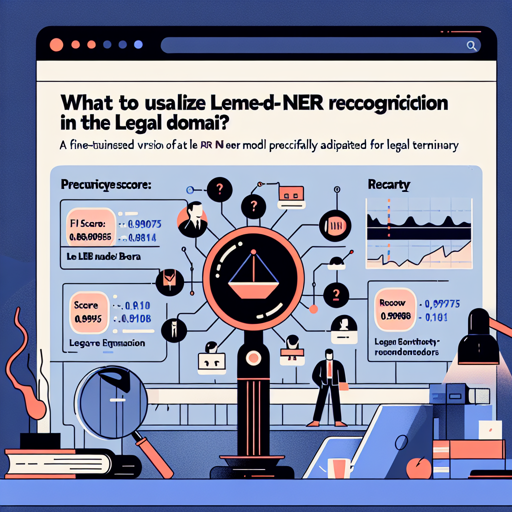The legal domain is replete with complex terminology and nuanced distinctions, which makes it a prime candidate for Natural Language Processing (NLP) applications—especially Named Entity Recognition (NER). In this blog, we’ll explore how to effectively use the LeNER-Br NER model, designed specifically for the intricacies of Portuguese legal texts. Let’s get started!
What is the LeNER-Br Model?
The LeNER-Br model is a fine-tuned version of the BERT model specifically crafted for the token classification task within the legal sector. This model operates on Portuguese texts and has demonstrated impressive metrics on validation datasets, achieving:
- F1 Score: 0.9082
- Precision: 0.8975
- Recall: 0.9191
- Accuracy: 0.9808
Getting Started with the LeNER-Br Model
1. Environment Setup
To begin utilizing the LeNER-Br model, you need to have a Python environment prepared with the necessary libraries. Ensure that you have PyTorch and Transformers installed. You can run the following commands:
!pip install torch transformers2. Loading the Model
Here’s where the magic happens! You’ll load the LeNER-Br model and tokenizer:
from transformers import AutoModelForTokenClassification, AutoTokenizer
import torch
model_name = "pierreguillouner-bert-large-cased-pt-lenerbr"
model = AutoModelForTokenClassification.from_pretrained(model_name)
tokenizer = AutoTokenizer.from_pretrained(model_name)
Think of loading your model like setting up a powerful legal assistant who is well-versed in Portuguese law. With this assistant at your side, you can tackle legal texts with confidence!
3. Making Predictions
With the model loaded, you can now input text for prediction:
input_text = "Acrescento que não há de se falar em violação do artigo 114, § 3º, da Constituição Federal."
inputs = tokenizer(input_text, max_length=512, truncation=True, return_tensors='pt')
outputs = model(**inputs).logits
predictions = torch.argmax(outputs, dim=2)
tokens = inputs['input_ids'][0]
for token, prediction in zip(tokens, predictions[0].numpy()):
print((tokenizer.decode([token]), model.config.id2label[prediction]))
Here, you’re giving your assistant a brief from a legal document, and it’s providing insights into the named entities present—much like how a lawyer analyzes key points in a case.
Training Procedure
If you’re looking to fine-tune the model for your own dataset, understanding the training parameters is crucial. For our purposes, here are the key hyperparameters you might consider:
- Batch Size: 2
- Learning Rate: 2e-5
- Number of Epochs: 10
4. Accessing the Training Notebook
If you’re eager to dive deeper and set up your training, you can find the training notebook on GitHub.
Troubleshooting
While using the LeNER-Br model, you might encounter some challenges. Here are a few troubleshooting tips:
- Memory Errors: If your input text is too long, consider truncating it or splitting it into smaller segments.
- Model Predictions Not Making Sense: Ensure that your tokenizer and model correspond. If you changed the model, make sure to reload the appropriate tokenizer.
- Installation Issues: Check if your Python package installations are up-to-date. Compatibility issues can arise from outdated libraries.
For more insights, updates, or to collaborate on AI development projects, stay connected with fxis.ai.
Conclusion
Utilizing the LeNER-Br model can significantly enhance your capabilities in analyzing Portuguese legal texts. With its high precision and recall, you can expect accurate identification of entities, leading to better-informed decisions. Embrace the power of NLP in your legal workflows!
At fxis.ai, we believe that such advancements are crucial for the future of AI, as they enable more comprehensive and effective solutions. Our team is continually exploring new methodologies to push the envelope in artificial intelligence, ensuring that our clients benefit from the latest technological innovations.

